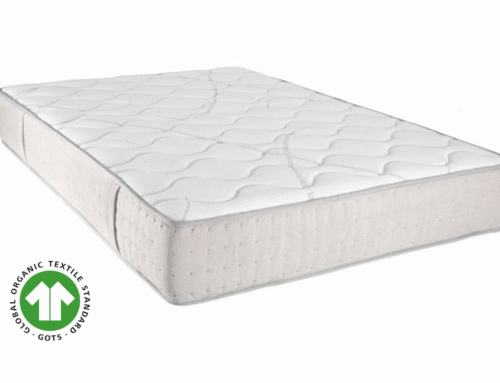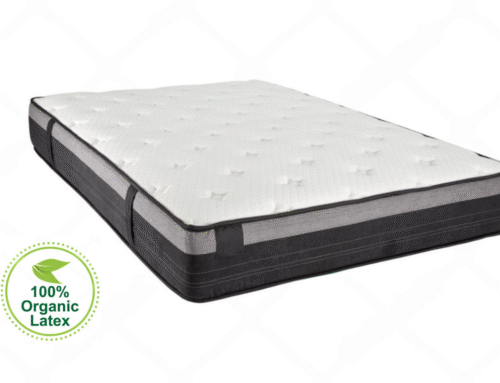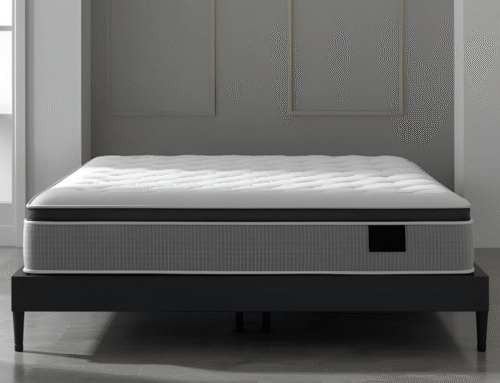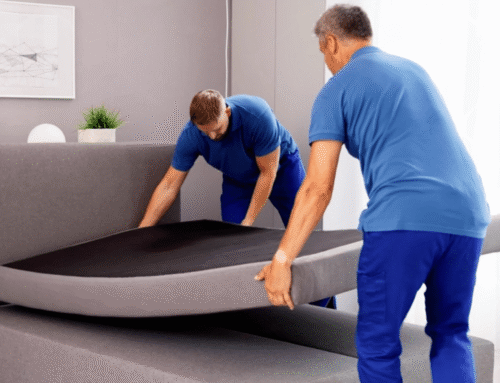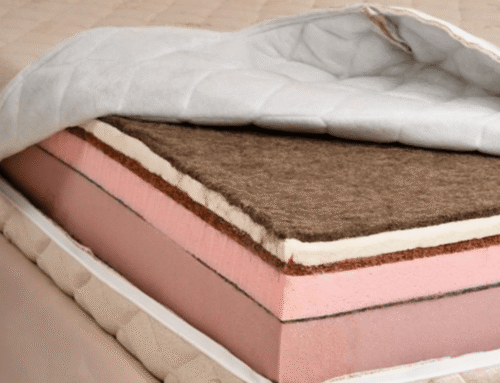Latex mattresses are known for lasting longer than most foam or spring beds. While regular mattresses often start to sag after 7 to 10 years, a good latex mattress can stay supportive for 15 to 20 years. This means you don’t need to replace it as often, which is a big deal for people who want steady comfort over time.
The main reason they last so long is the material itself. Latex responds quickly to pressure, bounces back into shape, and doesn’t form deep body impressions. It also keeps its firmness more evenly as the years go by. If you take care of it, like rotating the mattress or using a solid, breathable base, it can outlast many other beds.
Still, how long it holds up depends on more than just the material. Things like body weight, how often the bed is used, and even the room’s temperature and humidity can affect its life span. But in general, latex is one of the most durable mattress materials you can find.
Key Takeaways
- Latex mattresses provide unrivaled durability, with lifespans that tend to be 15–20 years long—double that of memory foam or spring mattresses. That is serious value for your money if you don’t mind fewer replacements.
- Natural latex is more resilient than synthetic blends, maintaining its support and shape without sagging or body dips with the passage of time. It’s bouncy, well-ventilated, and naturally resistant to mold and dust mites.
- Every 6–12 months, rotating your latex mattress prevents uneven wear and makes it feel comfortable for a longer time. No flipping is necessary, just a turn.
- Heat, moisture, and heavy usage can reduce its lifespan, but a breathable base and mattress protector help a lot. Keep it dry, in the shade, and tidy.
- Though pricier upfront, latex is worth the investment for its durability, comfort, and eco-friendly materials, outlasting most mattress types by years.
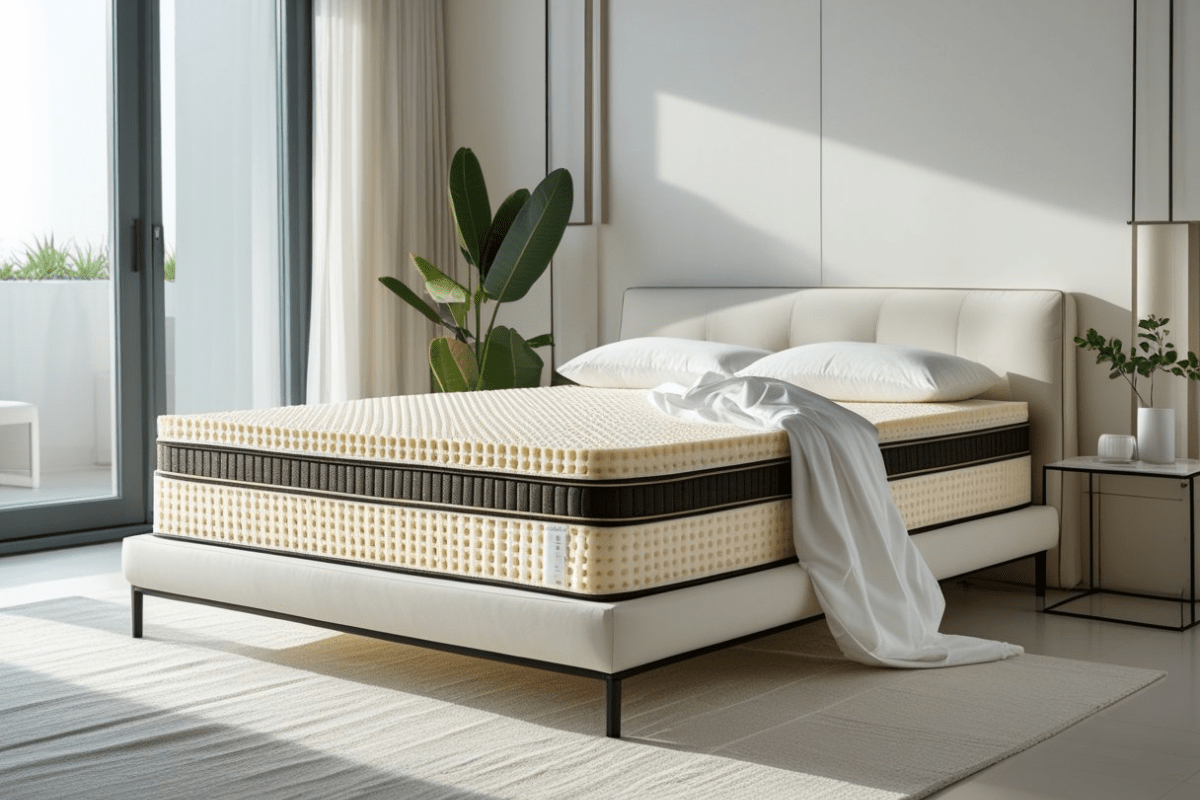
Why Latex Mattresses Last So Long
Latex is a very elastic, dense foam from the sap of rubber trees (natural latex) or a combination of natural and man-made ingredients. Its point elasticity allows it to compress only where your body presses without impacting the areas next to it.
Latex also carries an extraordinary support factor (compression modulus), or it’s soft enough to be comfortable but becomes firmer as weight is added. That two-sided quality maintains your spine in position while resisting deterioration. In contrast with polyurethane or memory foam that quickly loses firmness, latex stays strong for decades. This difference becomes especially clear when comparing the feel of a latex mattress, the difference between foam and latex mattress, and the difference between latex and memory foam mattress.
There’s another benefit: Latex occurs in nature with inherent resistance to dust mites, mold, and bacteria, which keeps the material from breaking down as rapidly from environmental conditions.
Average Lifespan Of A Latex Mattress
Latex mattresses also last longer than most, usually lasting between 15 and 20 years. Some even say theirs will last longer with proper care and rotation. In comparison to memory foam or innerspring versions, latex readily remains supportive for almost twice as long.
Natural Dunlop latex is the strongest and most resilient, due to its tightly compact structure. Others prefer slightly softer, more ventilated comfort and use Talalay latex, which also lasts well for about 12 to 18 years. Either method, latex does not degrade as rapidly as other materials.
Despite care, any bed sooner or later develops wear. Loss of support, severe impressions, or chronic discomfort after 15 years typically indicates its time is up. Some may look fine on the outside, but the body registers when sleep quality is low, so thickness and weight should also be considered.
Factors That Affect How Long A Latex Mattress Lasts
Primary factors determining durability are:
- Latex type: 100% natural latex lasts longer than synthetic blends.
- Layer design: More substantial latex cores generally wear more gradually.
- Sleep patterns: Heavy sleepers or regular bed-sharing can reduce lifespan.
- Quality of bed base: Sag-free, well-ventilated base maintains an even support of the latex.
- Environmental conditions: High humidity or temperature can speed up material aging.
Ongoing maintenance, such as turning the mattress head-to-foot every 6–12 months, can offset these conditions and also help make a latex mattress softer and get rid of its smell.
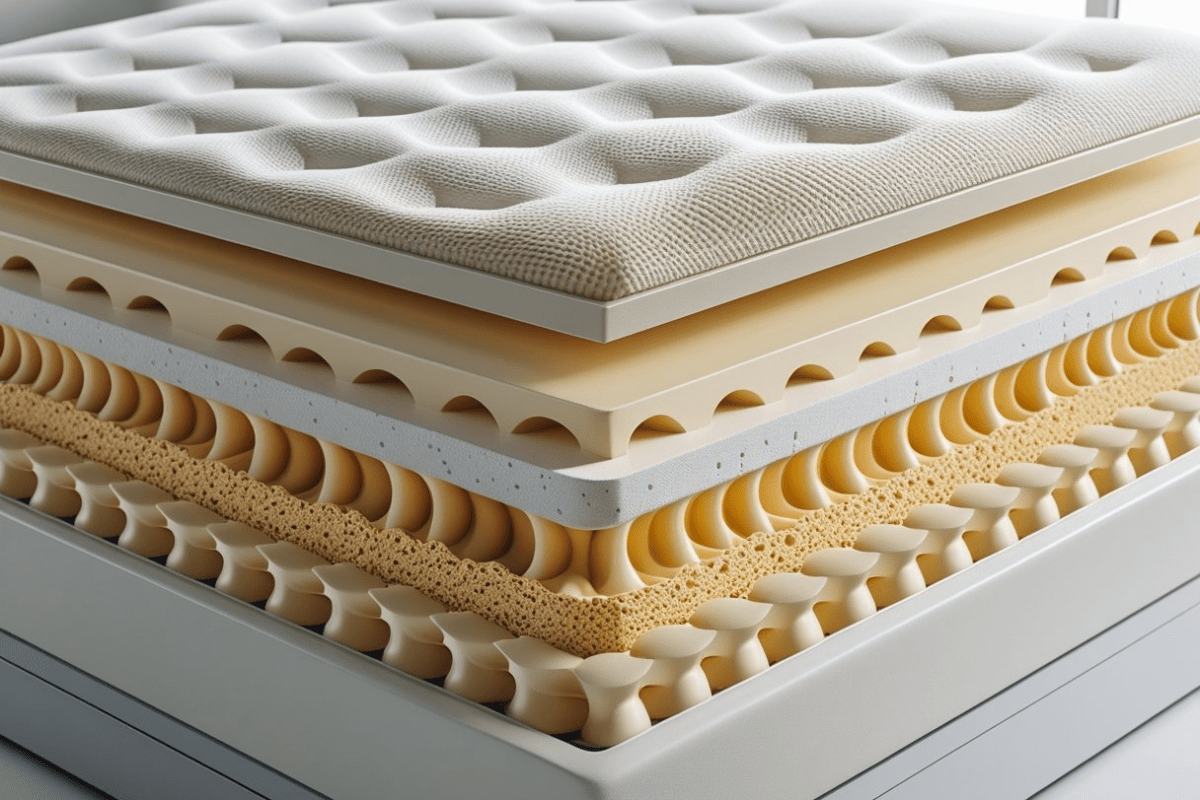
How To Make Your Latex Mattress Last Longer
Employing a waterproof, breathable mattress protector keeps liquids and moisture from seeping into the latex. That bit of protection goes a great distance in preventing mildew development and stains on the surface. A protector also makes the mattress smell better over time.
Rolling the mattress every six to twelve months prevents any one area from wearing out sooner than the others. Latex is durable, but regular rolling avoids uneven impressions. It’s an easy thing that promotes comfort and long-term existence.
To maintain the integrity of latex, don’t expose it to direct sunlight for long hours. Exposure to sunlight can dry out the surface to form cracks or become brittle. A clean mattress will also not deteriorate as fast, so every now and then vacuuming will eliminate settled dust. Support the mattress with a stable base such as a platform bed or a slatted frame with thin gaps to prevent sagging and structural stress. Proper care also includes storing, cleaning, and moving a latex mattress carefully to avoid damage and preserve its durability.
Signs Your Latex Mattress Needs Replacing
A sagging or dipping latex mattress more than an inch is no longer offering the level of support it once did. Even the most hard-wearing latex beds eventually break down, and deep body impressions will interfere with proper alignment while sleeping. This can force muscles to labor just to remain comfortable.
Others feel increased pressure in the lower back, hips, or shoulders compared to before. That’s a warning sign that the comfort layers are not any longer supporting the body equally. What was once soft and supportive now becomes too firm or uneven in some areas.
Lower back or neck pain that resolves after a night on the couch or another bed usually indicates a tired mattress. Once the support core has collapsed or is uneven, it is difficult to hold an ideal sleeping position. Most latex mattresses lose their shape and comfort after 15–20 years, so a replacement is usually the best choice.

Latex vs. Other Mattress Types: Longevity Comparison
Latex mattresses last longer than other mattresses by a significant amount. Natural latex is able to remain supportive from 15 to 20 years or more, whereas Talalay latex models tend to last about 12 to 18 years. This high level of longevity has been verified by long-term mattress owners who experience fewer dips and sagging with use.
In comparison, hybrid and memory foam mattresses typically last 8 to 10 years without becoming soft or softening in specific spots. Innerspring mattresses decline even quicker, with most replacement occurring within 7 to 9 years because of coil breakdown or an uneven sleeping surface. They can provide comfortable relief in the short run but tend to not retain form as long.
The longer lifetime of latex is attractive to those who prefer a bed that won’t have to be replaced so soon. It is also appropriate for those who want to contribute less to landfills or who want to spend one time having a reliable product. While the initial cost might be more, many view the added years of use as a superior payoff in the long term.
Why Latex Is Worth The Investment
Latex mattresses last longer than other mattresses by a significant amount. Natural latex is able to remain supportive from 15 to 20 years or more, whereas Talalay latex models last about 12 to 18 years. This high level of longevity has been verified by long-term mattress owners who experience fewer dips and sagging with use.
In comparison, hybrid and memory foam mattresses typically last 8 to 10 years without becoming soft or softening in specific spots. Innerspring mattresses decline even quicker, with most replacement occurring within 7 to 9 years because of coil breakdown or an uneven sleeping surface. They can provide comfortable relief in the short run but tend to not retain form as long.
The longer lifetime of latex is attractive to those who prefer a bed that won’t have to be replaced so soon. It is also appropriate for those who want to contribute less to landfills or who want to spend one time having a reliable product. While the initial cost might be more, many view the added years of use as a superior payoff in the long term.
Will A Latex Mattress Sag Over Time?
Latex mattresses retain their shape longer than memory foam or polyfoam. Latex structure remains supportive without sinking too rapidly, even after years of frequent use. Natural latex particularly has a springy, elastic texture that enables it to recover after compression.
Others begin developing dips after only a few years, particularly in the areas where individuals tend to sleep. Latex does better in this regard, and it will very seldom create deep impressions except when the material is mixed with inferior foams. Even softer latex designs remain more resistant than many synthetics.
Selecting a mattress that features a firm latex core and a good support structure contributes to slowing down sagging. Regular care also lengthens its lifespan, such as turning the mattress over every few months and having a firm foundation. All materials deteriorate over time, but latex lasts longer than most and remains comfortable many years past the average foam bed.
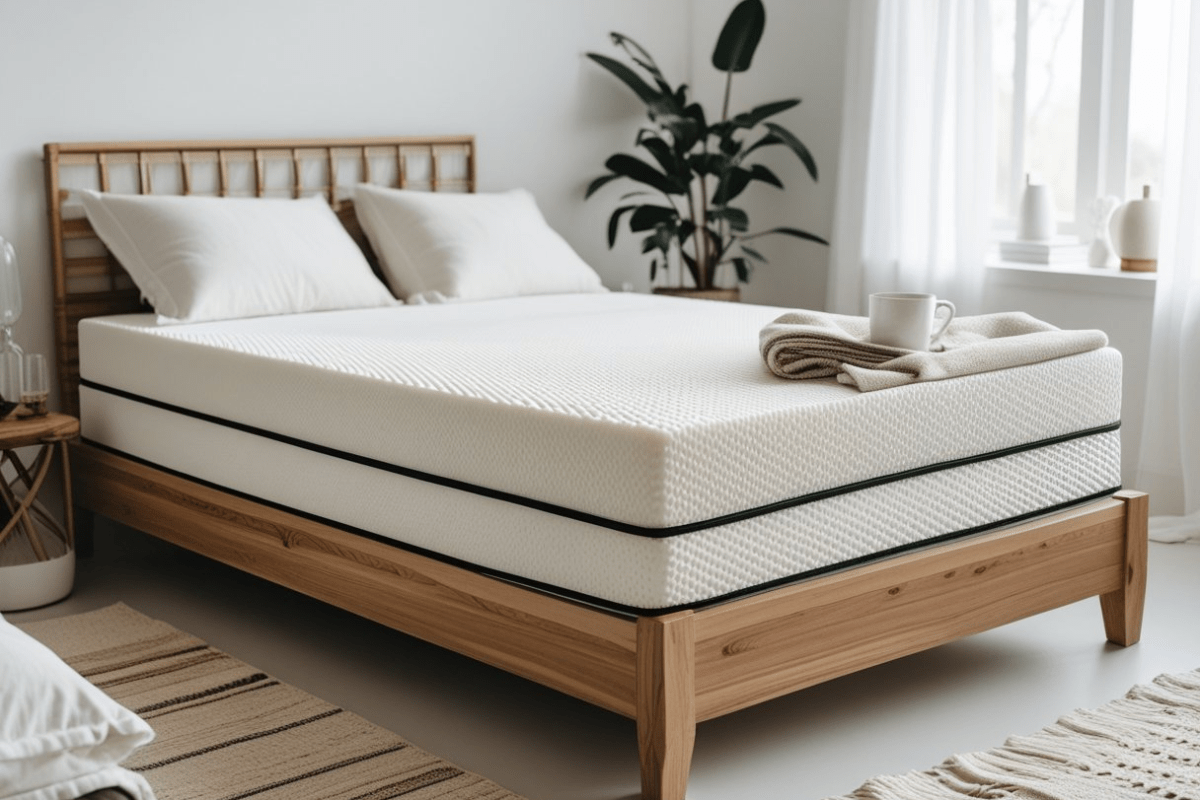
Do I Need to Flip Latex Mattress?
Rotating a latex mattress is actually no longer necessary because the majority of contemporary designs feature only one comfort side. These mattresses concentrate on one sleeping surface with the base designed to remain down, thus flipping can wind up damaging the mattress in the long run. Nevertheless, frequent rotating maintains the mattress from creating unbalanced areas.
Turning spreads the pressure and avoids sagging in the most used areas, particularly where the shoulders and hips lie. This easy habit can prolong the life of the mattress and make it feel supportive for longer. Without turning, the mattress may begin to wear unevenly, which impairs the quality of sleep.
Even if the mattress is initially comfortable, neglecting to rotate can result in dips or lumps after a while. Therefore, although flipping is not required for most latex mattresses, turning them 180 degrees every couple of months maintains them in optimal condition. This little effort ensures the provision of consistent support and comfort throughout the life of the mattress, and knowledge of cutting a latex mattress also helps when customizing or adjusting the mattress to fit a specific bed size or shape.
Final Thoughts
If you’re fed up with having to replace your bed every few years, a latex mattress is one of the best sleep investments you can make. Take care of it, and yours will remain comfortable and supportive for 15–20 years or more, many times longer than most memory foam, hybrid, or innerspring mattresses.
The trick is to use good-quality natural latex, combine it with a firm, well-ventilated foundation, and adopt basic maintenance practices such as rotation and keeping it dry. Do that, and your mattress won’t only survive longer, it will continue to provide the same comfort and spinal support you had on night number one. In other words, when durability is the issue, latex isn’t simply great, it’s in a class by itself.

